- Privacy Policy

Home » Independent Variable – Definition, Types and Examples

Independent Variable – Definition, Types and Examples
Table of Contents
In research, variables are essential components that help scientists investigate relationships, effects, and patterns within data. Variables are typically classified as independent and dependent . The independent variable is a core element in experimental design, representing the factor that researchers manipulate or control to observe its effect on another variable, known as the dependent variable.

Independent Variable
An independent variable is a variable that is manipulated or controlled by the researcher to test its effect on the dependent variable. In an experiment, it is considered the “cause,” while the dependent variable represents the “effect.” The independent variable is used to investigate how changes in one condition can impact other conditions or outcomes.
Key Characteristics of Independent Variables :
- Controlled or manipulated by the researcher.
- Represents the “cause” in a cause-and-effect relationship.
- The independent variable’s values can vary to observe their effect on the dependent variable.
Example : In a study examining the effects of study hours on test scores, study hours is the independent variable because it is manipulated to measure its impact on test scores (the dependent variable).
Types of Independent Variables
Independent variables can be classified into different types based on the nature of the study, including manipulated independent variables , subject variables , and control variables .
1. Manipulated Independent Variable
Definition : A manipulated independent variable is directly controlled by the researcher. By altering the levels or conditions of this variable, researchers can study its effect on the dependent variable. This type of independent variable is commonly used in experimental studies.
Characteristics :
- Deliberately changed or adjusted by the researcher.
- Allows for cause-and-effect conclusions in experimental research.
- Provides insight into the effect of specific factors.
Example : In a clinical trial testing a new drug, the dosage of the drug is the manipulated independent variable. Participants are assigned different doses to measure its effect on health outcomes, such as symptom relief or recovery time.
2. Subject Variable
Definition : Subject variables, also known as “participant variables,” are characteristics inherent to the study participants and cannot be manipulated by the researcher. These variables, such as age, gender, or socioeconomic status, often act as independent variables in non-experimental research.
- Inherent to participants and not manipulated.
- Used in observational or correlational studies where manipulation is not possible.
- Helps identify potential associations or relationships rather than causation.
Example : In a study examining the impact of age on memory retention, age is a subject variable, as it varies naturally among participants and is not manipulated.
3. Control Variable
Definition : Control variables are factors that are kept constant by the researcher throughout the experiment. These variables are not the main focus of the study but are controlled to prevent them from influencing the dependent variable.
- Not a focus of the study but essential for isolating the effect of the independent variable.
- Remains consistent across different conditions or groups.
- Reduces confounding effects, enhancing the study’s internal validity.
Example : In a study examining the effect of caffeine intake on alertness, time of day might be a control variable, ensuring that all participants consume caffeine and complete tasks at the same time to avoid variations due to diurnal patterns.
Independent Variable in Experimental Design
Independent variables play a central role in experimental design. By manipulating the independent variable, researchers can observe its direct effect on the dependent variable. Here’s how an independent variable fits within an experimental framework:
- Define the Independent Variable : Choose a factor you want to study and vary, such as temperature, treatment type, or time spent studying.
- Create Different Levels : Define at least two levels or conditions of the independent variable (e.g., high temperature vs. low temperature, control group vs. treatment group).
- Measure the Dependent Variable : Assess the outcome variable (e.g., performance, health, or reaction time) to see how it changes with different levels of the independent variable.
Examples of Independent Variables in Research
- Independent Variable : Type of teaching method (traditional vs. interactive).
- Dependent Variable : Student engagement levels.
- Example : A study could examine whether using interactive teaching methods increases student engagement compared to traditional lectures.
- Independent Variable : Amount of sleep (4 hours vs. 8 hours).
- Dependent Variable : Cognitive performance on a memory task.
- Example : Researchers manipulate sleep duration to study its effect on cognitive performance, with the expectation that more sleep will improve memory recall.
- Independent Variable : Type of diet (low-fat vs. high-fat).
- Dependent Variable : Weight loss over a 12-week period.
- Example : In a clinical study, participants are assigned different diets to observe which diet type results in greater weight loss.
- Independent Variable : Type of advertisement (video ad vs. social media ad).
- Dependent Variable : Consumer purchase intent.
- Example : A company tests whether a video ad on YouTube or a social media ad on Instagram generates higher purchase intent among viewers.
- Independent Variable : Water temperature (cool vs. warm).
- Dependent Variable : Fish activity levels.
- Example : A researcher observes fish in water at different temperatures to measure their activity levels, hypothesizing that temperature will affect behavior.
The Importance of Independent Variables in Research
Independent variables are fundamental for conducting rigorous research, as they:
- Enable Causal Inference : Manipulating independent variables allows researchers to infer cause-and-effect relationships between variables.
- Enhance Experimental Control : Researchers can control the independent variable to isolate its impact on the dependent variable.
- Facilitate Comparisons : By comparing different levels or types of an independent variable, researchers can observe variations in outcomes and draw meaningful conclusions.
Tips for Using Independent Variables in Research
- Define Operationally : Clearly define and specify how you will manipulate or categorize the independent variable.
- Ensure Variation : Include at least two levels or conditions to allow for comparison across different treatments.
- Control Extraneous Variables : Control or account for additional factors that could influence the dependent variable, maintaining focus on the independent variable’s effect.
- Randomize Where Possible : Use random assignment to groups to minimize bias and increase the validity of your findings.
Common Pitfalls in Using Independent Variables
- Confounding Variables : Variables that unintentionally influence the dependent variable can interfere with results. Using randomization and control can help reduce confounding.
- Inconsistent Manipulation : Ensure that each level of the independent variable is applied consistently to avoid inconsistent effects on the dependent variable.
- Measurement Errors : Accurately measure the independent variable and its levels to avoid introducing errors that could affect results.
The independent variable is a critical element in research, especially in experimental design, where it helps establish causal relationships. By carefully defining, manipulating, and controlling the independent variable, researchers can gain insights into how different factors influence outcomes. Understanding the types and roles of independent variables is essential for designing valid, reliable studies that yield meaningful results.
- Cohen, B. H. (2013). Explaining Psychological Statistics (4th ed.). Wiley.
- Creswell, J. W., & Creswell, J. D. (2018). Research Design: Qualitative, Quantitative, and Mixed Methods Approaches (5th ed.). SAGE Publications.
- Field, A. (2013). Discovering Statistics Using IBM SPSS Statistics (4th ed.). SAGE Publications.
- Goodwin, C. J., & Goodwin, K. A. (2016). Research in Psychology: Methods and Design (8th ed.). Wiley.
- Gravetter, F. J., & Forzano, L. B. (2018). Research Methods for the Behavioral Sciences (6th ed.). Cengage Learning.
About the author
Muhammad Hassan
Researcher, Academic Writer, Web developer
You may also like

Composite Variable – Definition, Types and...

Control Variable – Definition, Types and Examples

Interval Variable – Definition, Purpose and...

Extraneous Variable – Types, Control and Examples

Dependent Variable – Definition, Types and...

Confounding Variable – Definition, Method and...
Independent Variables (Definition + 43 Examples)

Have you ever wondered how scientists make discoveries and how researchers come to understand the world around us? A crucial tool in their kit is the concept of the independent variable, which helps them delve into the mysteries of science and everyday life.
An independent variable is a condition or factor that researchers manipulate to observe its effect on another variable, known as the dependent variable. In simpler terms, it’s like adjusting the dials and watching what happens! By changing the independent variable, scientists can see if and how it causes changes in what they are measuring or observing, helping them make connections and draw conclusions.
In this article, we’ll explore the fascinating world of independent variables, journey through their history, examine theories, and look at a variety of examples from different fields.
History of the Independent Variable

Once upon a time, in a world thirsty for understanding, people observed the stars, the seas, and everything in between, seeking to unlock the mysteries of the universe.
The story of the independent variable begins with a quest for knowledge, a journey taken by thinkers and tinkerers who wanted to explain the wonders and strangeness of the world.
Origins of the Concept
The seeds of the idea of independent variables were sown by Sir Francis Galton , an English polymath, in the 19th century. Galton wore many hats—he was a psychologist, anthropologist, meteorologist, and a statistician!
It was his diverse interests that led him to explore the relationships between different factors and their effects. Galton was curious—how did one thing lead to another, and what could be learned from these connections?
As Galton delved into the world of statistical theories , the concept of independent variables started taking shape.
He was interested in understanding how characteristics, like height and intelligence, were passed down through generations.
Galton’s work laid the foundation for later thinkers to refine and expand the concept, turning it into an invaluable tool for scientific research.
Evolution over Time
After Galton’s pioneering work, the concept of the independent variable continued to evolve and grow. Scientists and researchers from various fields adopted and adapted it, finding new ways to use it to make sense of the world.
They discovered that by manipulating one factor (the independent variable), they could observe changes in another (the dependent variable), leading to groundbreaking insights and discoveries.
Through the years, the independent variable became a cornerstone in experimental design . Researchers in fields like physics, biology, psychology, and sociology used it to test hypotheses, develop theories, and uncover the laws that govern our universe.
The idea that originated from Galton’s curiosity had bloomed into a universal key, unlocking doors to knowledge across disciplines.
Importance in Scientific Research
Today, the independent variable stands tall as a pillar of scientific research. It helps scientists and researchers ask critical questions, test their ideas, and find answers. Without independent variables, we wouldn’t have many of the advancements and understandings that we take for granted today.
The independent variable plays a starring role in experiments, helping us learn about everything from the smallest particles to the vastness of space. It helps researchers create vaccines, understand social behaviors, explore ecological systems, and even develop new technologies.
In the upcoming sections, we’ll dive deeper into what independent variables are, how they work, and how they’re used in various fields.
Together, we’ll uncover the magic of this scientific concept and see how it continues to shape our understanding of the world around us.
What is an Independent Variable?
Embarking on the captivating journey of scientific exploration requires us to grasp the essential terms and ideas. It's akin to a treasure hunter mastering the use of a map and compass.
In our adventure through the realm of independent variables, we’ll delve deeper into some fundamental concepts and definitions to help us navigate this exciting world.
Variables in Research
In the grand tapestry of research, variables are the gems that researchers seek. They’re elements, characteristics, or behaviors that can shift or vary in different circumstances.
Picture them as the myriad of ingredients in a chef’s kitchen—each variable can be adjusted or modified to create a myriad of dishes, each with a unique flavor!
Understanding variables is essential as they form the core of every scientific experiment and observational study.
Types of Variables
Independent Variable The star of our story, the independent variable, is the one that researchers change or control to study its effects. It’s like a chef experimenting with different spices to see how each one alters the taste of the soup. The independent variable is the catalyst, the initial spark that sets the wheels of research in motion.
Dependent Variable The dependent variable is the outcome we observe and measure . It’s the altered flavor of the soup that results from the chef’s culinary experiments. This variable depends on the changes made to the independent variable, hence the name!
Observing how the dependent variable reacts to changes helps scientists draw conclusions and make discoveries.
Control Variable Control variables are the unsung heroes of scientific research. They’re the constants, the elements that researchers keep the same to ensure the integrity of the experiment.
Imagine if our chef used a different type of broth each time he experimented with spices—the results would be all over the place! Control variables keep the experiment grounded and help researchers be confident in their findings.
Confounding Variables Imagine a hidden rock in a stream, changing the water’s flow in unexpected ways. Confounding variables are similar—they are external factors that can sneak into experiments and influence the outcome , adding twists to our scientific story.
These variables can blur the relationship between the independent and dependent variables, making the results of the study a bit puzzly. Detecting and controlling these hidden elements helps researchers ensure the accuracy of their findings and reach true conclusions.
There are of course other types of variables, and different ways to manipulate them called " schedules of reinforcement ," but we won't get into that too much here.
Role of the Independent Variable
Manipulation When researchers manipulate the independent variable, they are orchestrating a symphony of cause and effect. They’re adjusting the strings, the brass, the percussion, observing how each change influences the melody—the dependent variable.
This manipulation is at the heart of experimental research. It allows scientists to explore relationships, unravel patterns, and unearth the secrets hidden within the fabric of our universe.
Observation With every tweak and adjustment made to the independent variable, researchers are like seasoned detectives, observing the dependent variable for changes, collecting clues, and piecing together the puzzle.
Observing the effects and changes that occur helps them deduce relationships, formulate theories, and expand our understanding of the world. Every observation is a step towards solving the mysteries of nature and human behavior.
Identifying Independent Variables
Characteristics Identifying an independent variable in the vast landscape of research can seem daunting, but fear not! Independent variables have distinctive characteristics that make them stand out.
They’re the elements that are deliberately changed or controlled in an experiment to study their effects on the dependent variable. Recognizing these characteristics is like learning to spot footprints in the sand—it leads us to the heart of the discovery!
In Different Types of Research The world of research is diverse and varied, and the independent variable dons many guises! In the field of medicine, it might manifest as the dosage of a drug administered to patients.
In psychology, it could take the form of different learning methods applied to study memory retention. In each field, identifying the independent variable correctly is the golden key that unlocks the treasure trove of knowledge and insights.
As we forge ahead on our enlightening journey, equipped with a deeper understanding of independent variables and their roles, we’re ready to delve into the intricate theories and diverse examples that underscore their significance.
Independent Variables in Research
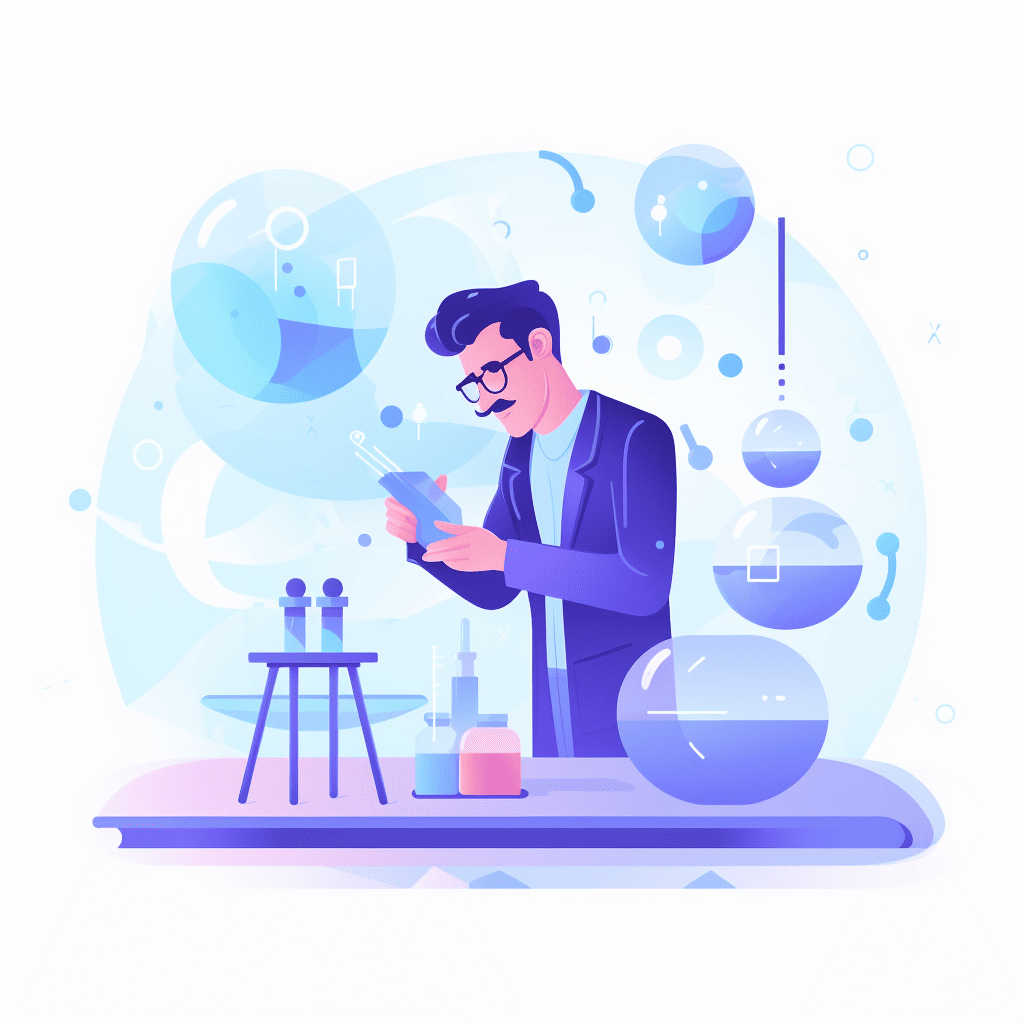
Now that we’re acquainted with the basic concepts and have the tools to identify independent variables, let’s dive into the fascinating ocean of theories and frameworks.
These theories are like ancient scrolls, providing guidelines and blueprints that help scientists use independent variables to uncover the secrets of the universe.
Scientific Method
What is it and How Does it Work? The scientific method is like a super-helpful treasure map that scientists use to make discoveries. It has steps we follow: asking a question, researching, guessing what will happen (that's a hypothesis!), experimenting, checking the results, figuring out what they mean, and telling everyone about it.
Our hero, the independent variable, is the compass that helps this adventure go the right way!
How Independent Variables Lead the Way In the scientific method, the independent variable is like the captain of a ship, leading everyone through unknown waters.
Scientists change this variable to see what happens and to learn new things. It’s like having a compass that points us towards uncharted lands full of knowledge!
Experimental Design
The Basics of Building Constructing an experiment is like building a castle, and the independent variable is the cornerstone. It’s carefully chosen and manipulated to see how it affects the dependent variable. Researchers also identify control and confounding variables, ensuring the castle stands strong, and the results are reliable.
Keeping Everything in Check In every experiment, maintaining control is key to finding the treasure. Scientists use control variables to keep the conditions consistent, ensuring that any changes observed are truly due to the independent variable. It’s like ensuring the castle’s foundation is solid, supporting the structure as it reaches for the sky.
Hypothesis Testing
Making Educated Guesses Before they start experimenting, scientists make educated guesses called hypotheses . It’s like predicting which X marks the spot of the treasure! It often includes the independent variable and the expected effect on the dependent variable, guiding researchers as they navigate through the experiment.
Independent Variables in the Spotlight When testing these guesses, the independent variable is the star of the show! Scientists change and watch this variable to see if their guesses were right. It helps them figure out new stuff and learn more about the world around us!
Statistical Analysis
Figuring Out Relationships After the experimenting is done, it’s time for scientists to crack the code! They use statistics to understand how the independent and dependent variables are related and to uncover the hidden stories in the data.
Experimenters have to be careful about how they determine the validity of their findings, which is why they use statistics. Something called "experimenter bias" can get in the way of having true (valid) results, because it's basically when the experimenter influences the outcome based on what they believe to be true (or what they want to be true!).
How Important are the Discoveries? Through statistical analysis, scientists determine the significance of their findings. It’s like discovering if the treasure found is made of gold or just shiny rocks. The analysis helps researchers know if the independent variable truly had an effect, contributing to the rich tapestry of scientific knowledge.
As we uncover more about how theories and frameworks use independent variables, we start to see how awesome they are in helping us learn more about the world. But we’re not done yet!
Up next, we’ll look at tons of examples to see how independent variables work their magic in different areas.
Examples of Independent Variables
Independent variables take on many forms, showcasing their versatility in a range of experiments and studies. Let’s uncover how they act as the protagonists in numerous investigations and learning quests!
Science Experiments
1) plant growth.
Consider an experiment aiming to observe the effect of varying water amounts on plant height. In this scenario, the amount of water given to the plants is the independent variable!
2) Freezing Water
Suppose we are curious about the time it takes for water to freeze at different temperatures. The temperature of the freezer becomes the independent variable as we adjust it to observe the results!
3) Light and Shadow
Have you ever observed how shadows change? In an experiment, adjusting the light angle to observe its effect on an object’s shadow makes the angle of light the independent variable!
4) Medicine Dosage
In medical studies, determining how varying medicine dosages influence a patient’s recovery is essential. Here, the dosage of the medicine administered is the independent variable!
5) Exercise and Health
Researchers might examine the impact of different exercise forms on individuals’ health. The various exercise forms constitute the independent variable in this study!
6) Sleep and Wellness
Have you pondered how the sleep duration affects your well-being the following day? In such research, the hours of sleep serve as the independent variable!

7) Learning Methods
Psychologists might investigate how diverse study methods influence test outcomes. Here, the different study methods adopted by students are the independent variable!
8) Mood and Music
Have you experienced varied emotions with different music genres? The genre of music played becomes the independent variable when researching its influence on emotions!
9) Color and Feelings
Suppose researchers are exploring how room colors affect individuals’ emotions. In this case, the room colors act as the independent variable!
Environment
10) rainfall and plant life.
Environmental scientists may study the influence of varying rainfall levels on vegetation. In this instance, the amount of rainfall is the independent variable!
11) Temperature and Animal Behavior
Examining how temperature variations affect animal behavior is fascinating. Here, the varying temperatures serve as the independent variable!
12) Pollution and Air Quality
Investigating the effects of different pollution levels on air quality is crucial. In such studies, the pollution level is the independent variable!
13) Internet Speed and Productivity
Researchers might explore how varying internet speeds impact work productivity. In this exploration, the internet speed is the independent variable!
14) Device Type and User Experience
Examining how different devices affect user experience is interesting. Here, the type of device used is the independent variable!

15) Software Version and Performance
Suppose a study aims to determine how different software versions influence system performance. The software version becomes the independent variable!
16) Teaching Style and Student Engagement
Educators might investigate the effect of varied teaching styles on student engagement. In such a study, the teaching style is the independent variable!
17) Class Size and Learning Outcome
Researchers could explore how different class sizes influence students’ learning. Here, the class size is the independent variable!
18) Homework Frequency and Academic Achievement
Examining the relationship between the frequency of homework assignments and academic success is essential. The frequency of homework becomes the independent variable!
19) Telescope Type and Celestial Observation
Astronomers might study how different telescopes affect celestial observation. In this scenario, the telescope type is the independent variable!
20) Light Pollution and Star Visibility
Investigating the influence of varying light pollution levels on star visibility is intriguing. Here, the level of light pollution is the independent variable!
21) Observation Time and Astronomical Detail
Suppose a study explores how observation duration affects the detail captured in astronomical images. The duration of observation serves as the independent variable!
22) Community Size and Social Interaction
Sociologists may examine how the size of a community influences social interactions. In this research, the community size is the independent variable!
23) Cultural Exposure and Social Tolerance
Investigating the effect of diverse cultural exposure on social tolerance is vital. Here, the level of cultural exposure is the independent variable!
24) Economic Status and Educational Attainment
Researchers could explore how different economic statuses impact educational achievements. In such studies, economic status is the independent variable!
25) Training Intensity and Athletic Performance
Sports scientists might study how varying training intensities affect athletes’ performance. In this case, the training intensity is the independent variable!
26) Equipment Type and Player Safety
Examining the relationship between different sports equipment and player safety is crucial. Here, the type of equipment used is the independent variable!
27) Team Size and Game Strategy
Suppose researchers are investigating how the size of a sports team influences game strategy. The team size becomes the independent variable!
28) Diet Type and Health Outcome
Nutritionists may explore the impact of various diets on individuals’ health. In this exploration, the type of diet followed is the independent variable!
29) Caloric Intake and Weight Change
Investigating how different caloric intakes influence weight change is essential. In such a study, the caloric intake is the independent variable!
30) Food Variety and Nutrient Absorption
Researchers could examine how consuming a variety of foods affects nutrient absorption. Here, the variety of foods consumed is the independent variable!
Real-World Examples of Independent Variables

Isn't it fantastic how independent variables play such an essential part in so many studies? But the excitement doesn't stop there!
Now, let’s explore how findings from these studies, led by independent variables, make a big splash in the real world and improve our daily lives!
Healthcare Advancements
31) treatment optimization.
By studying different medicine dosages and treatment methods as independent variables, doctors can figure out the best ways to help patients recover quicker and feel better. This leads to more effective medicines and treatment plans!
32) Lifestyle Recommendations
Researching the effects of sleep, exercise, and diet helps health experts give us advice on living healthier lives. By changing these independent variables, scientists uncover the secrets to feeling good and staying well!
Technological Innovations
33) speeding up the internet.
When scientists explore how different internet speeds affect our online activities, they’re able to develop technologies to make the internet faster and more reliable. This means smoother video calls and quicker downloads!
34) Improving User Experience
By examining how we interact with various devices and software, researchers can design technology that’s easier and more enjoyable to use. This leads to cooler gadgets and more user-friendly apps!
Educational Strategies
35) enhancing learning.
Investigating different teaching styles, class sizes, and study methods helps educators discover what makes learning fun and effective. This research shapes classrooms, teaching methods, and even homework!
36) Tailoring Student Support
By studying how students with diverse needs respond to different support strategies, educators can create personalized learning experiences. This means every student gets the help they need to succeed!
Environmental Protection
37) conserving nature.
Researching how rainfall, temperature, and pollution affect the environment helps scientists suggest ways to protect our planet. By studying these independent variables, we learn how to keep nature healthy and thriving!
38) Combating Climate Change
Scientists studying the effects of pollution and human activities on climate change are leading the way in finding solutions. By exploring these independent variables, we can develop strategies to combat climate change and protect the Earth!
Social Development
39) building stronger communities.
Sociologists studying community size, cultural exposure, and economic status help us understand what makes communities happy and united. This knowledge guides the development of policies and programs for stronger societies!
40) Promoting Equality and Tolerance
By exploring how exposure to diverse cultures affects social tolerance, researchers contribute to fostering more inclusive and harmonious societies. This helps build a world where everyone is respected and valued!
Enhancing Sports Performance
41) optimizing athlete training.
Sports scientists studying training intensity, equipment type, and team size help athletes reach their full potential. This research leads to better training programs, safer equipment, and more exciting games!
42) Innovating Sports Strategies
By investigating how different game strategies are influenced by various team compositions, researchers contribute to the evolution of sports. This means more thrilling competitions and matches for us to enjoy!
Nutritional Well-Being
43) guiding healthy eating.
Nutritionists researching diet types, caloric intake, and food variety help us understand what foods are best for our bodies. This knowledge shapes dietary guidelines and helps us make tasty, yet nutritious, meal choices!
44) Promoting Nutritional Awareness
By studying the effects of different nutrients and diets, researchers educate us on maintaining a balanced diet. This fosters a greater awareness of nutritional well-being and encourages healthier eating habits!
As we journey through these real-world applications, we witness the incredible impact of studies featuring independent variables. The exploration doesn’t end here, though!
Let’s continue our adventure and see how we can identify independent variables in our own observations and inquiries! Keep your curiosity alive, and let’s delve deeper into the exciting realm of independent variables!
Identifying Independent Variables in Everyday Scenarios
So, we’ve seen how independent variables star in many studies, but how about spotting them in our everyday life?
Recognizing independent variables can be like a treasure hunt – you never know where you might find one! Let’s uncover some tips and tricks to identify these hidden gems in various situations.
1) Asking Questions
One of the best ways to spot an independent variable is by asking questions! If you’re curious about something, ask yourself, “What am I changing or manipulating in this situation?” The thing you’re changing is likely the independent variable!
For example, if you’re wondering whether the amount of sunlight affects how quickly your laundry dries, the sunlight amount is your independent variable!
2) Making Observations
Keep your eyes peeled and observe the world around you! By watching how changes in one thing (like the amount of rain) affect something else (like the height of grass), you can identify the independent variable.
In this case, the amount of rain is the independent variable because it’s what’s changing!
3) Conducting Experiments
Get hands-on and conduct your own experiments! By changing one thing and observing the results, you’re identifying the independent variable.
If you’re growing plants and decide to water each one differently to see the effects, the amount of water is your independent variable!
4) Everyday Scenarios
In everyday scenarios, independent variables are all around!
When you adjust the temperature of your oven to bake cookies, the oven temperature is the independent variable.
Or if you’re deciding how much time to spend studying for a test, the study time is your independent variable!
5) Being Curious
Keep being curious and asking “What if?” questions! By exploring different possibilities and wondering how changing one thing could affect another, you’re on your way to identifying independent variables.
If you’re curious about how the color of a room affects your mood, the room color is the independent variable!
6) Reviewing Past Studies
Don’t forget about the treasure trove of past studies and experiments! By reviewing what scientists and researchers have done before, you can learn how they identified independent variables in their work.
This can give you ideas and help you recognize independent variables in your own explorations!
Exercises for Identifying Independent Variables
Ready for some practice? Let’s put on our thinking caps and try to identify the independent variables in a few scenarios.
Remember, the independent variable is what’s being changed or manipulated to observe the effect on something else! (You can see the answers below)
Scenario One: Cooking Time
You’re cooking pasta for dinner and want to find out how the cooking time affects its texture. What is the independent variable?
Scenario Two: Exercise Routine
You decide to try different exercise routines each week to see which one makes you feel the most energetic. What is the independent variable?
Scenario Three: Plant Fertilizer
You’re growing tomatoes in your garden and decide to use different types of fertilizer to see which one helps them grow the best. What is the independent variable?
Scenario Four: Study Environment
You’re preparing for an important test and try studying in different environments (quiet room, coffee shop, library) to see where you concentrate best. What is the independent variable?
Scenario Five: Sleep Duration
You’re curious to see how the number of hours you sleep each night affects your mood the next day. What is the independent variable?
By practicing identifying independent variables in different scenarios, you’re becoming a true independent variable detective. Keep practicing, stay curious, and you’ll soon be spotting independent variables everywhere you go.
Independent Variable: The cooking time is the independent variable. You are changing the cooking time to observe its effect on the texture of the pasta.
Independent Variable: The type of exercise routine is the independent variable. You are trying out different exercise routines each week to see which one makes you feel the most energetic.
Independent Variable: The type of fertilizer is the independent variable. You are using different types of fertilizer to observe their effects on the growth of the tomatoes.
Independent Variable: The study environment is the independent variable. You are studying in different environments to see where you concentrate best.
Independent Variable: The number of hours you sleep is the independent variable. You are changing your sleep duration to see how it affects your mood the next day.
Whew, what a journey we’ve had exploring the world of independent variables! From understanding their definition and role to diving into a myriad of examples and real-world impacts, we’ve uncovered the treasures hidden in the realm of independent variables.
The beauty of independent variables lies in their ability to unlock new knowledge and insights, guiding us to discoveries that improve our lives and the world around us.
By identifying and studying these variables, we embark on exciting learning adventures, solving mysteries and answering questions about the universe we live in.
Remember, the joy of discovery doesn’t end here. The world is brimming with questions waiting to be answered and mysteries waiting to be solved.
Keep your curiosity alive, continue exploring, and who knows what incredible discoveries lie ahead.
Related posts:
- Confounding Variable in Psychology (Examples + Definition)
- 19+ Experimental Design Examples (Methods + Types)
- Variable Interval Reinforcement Schedule (Examples)
- Variable Ratio Reinforcement Schedule (Examples)
- State Dependent Memory + Learning (Definition and Examples)
Reference this article:
About The Author
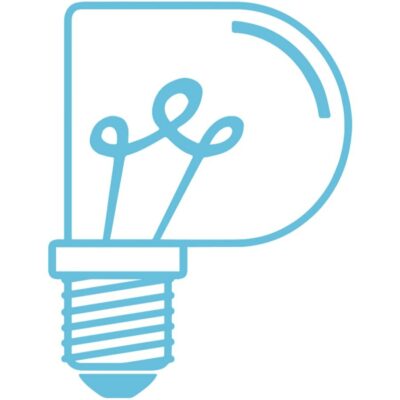
Free Personality Test
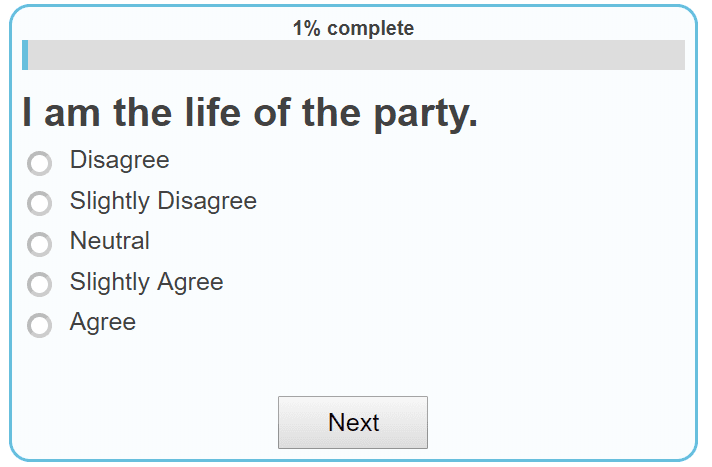
Free Memory Test
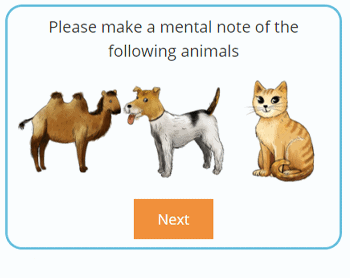
Free IQ Test
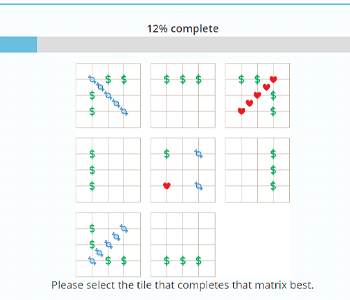
PracticalPie.com is a participant in the Amazon Associates Program. As an Amazon Associate we earn from qualifying purchases.
Follow Us On:
Youtube Facebook Instagram X/Twitter
Psychology Resources
Developmental
Personality
Relationships
Psychologists
Serial Killers
Psychology Tests
Personality Quiz
Memory Test
Depression test
Type A/B Personality Test
© PracticalPsychology. All rights reserved
Privacy Policy | Terms of Use
